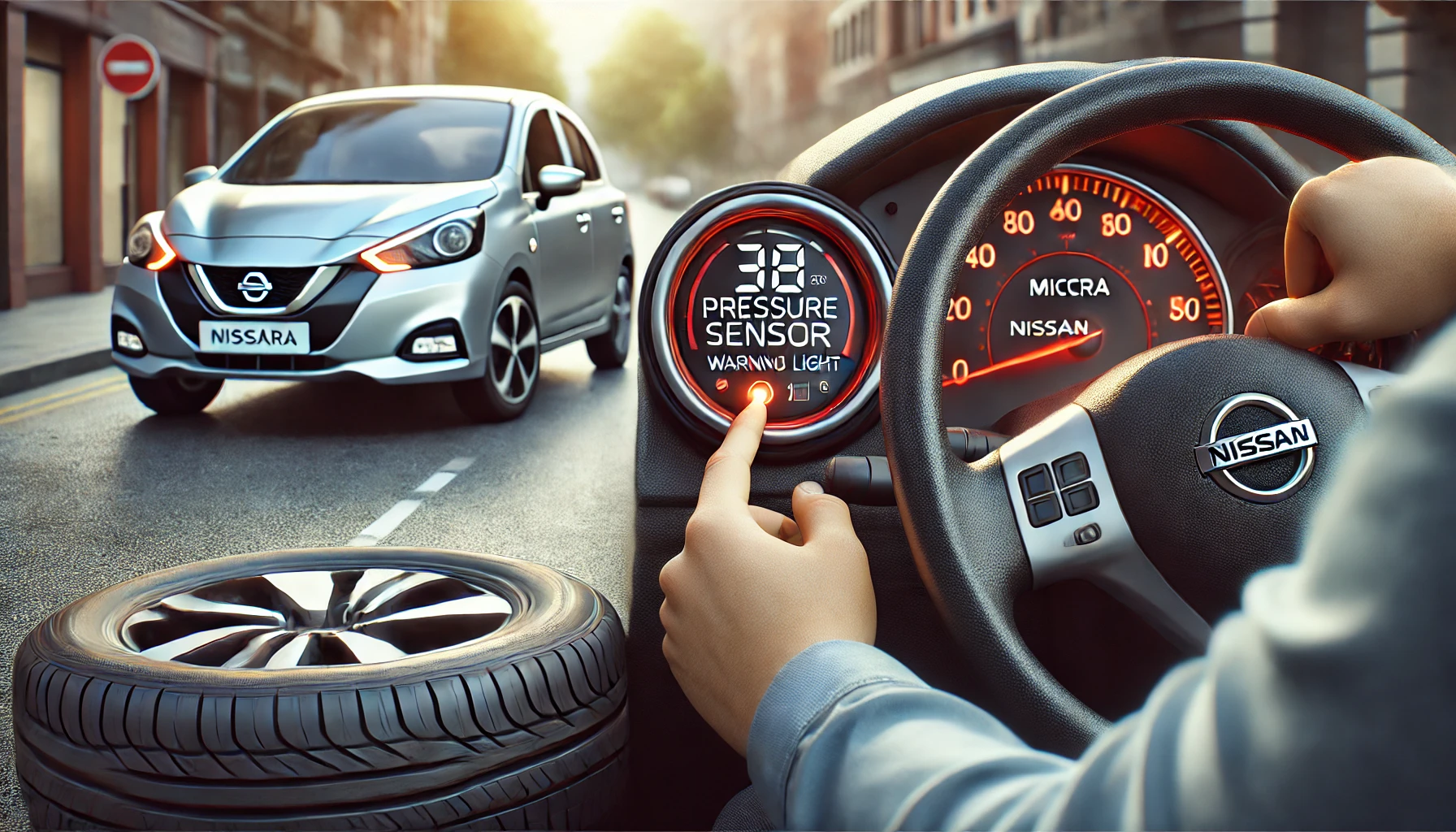
Common Causes of a Tire Pressure Sensor Fault in Nissan Micra
If your Nissan Micra is showing a tire pressure sensor warning, it can be due to several common reasons. Understanding these causes can help you resolve the issue faster and more efficiently.
1. Low or Uneven Tire Pressure
The most straightforward cause could be that one or more tires have low pressure. Even small differences in pressure can trigger the sensor. Make sure all tires, including the spare, are inflated to the correct levels.
2. Faulty Tire Pressure Sensors
Over time, the battery in the tire pressure monitoring sensors (TPMS) may die, or the sensor itself could become faulty. This is especially common if your vehicle is over 5 years old. Nissan Micra TPMS sensors usually last 5-7 years.
3. Sensor Recalibration Needed
Sometimes, the system just needs a reset after changing tires or rotating them. You can often reset the system by driving for a few minutes at a speed of around 25-30 mph, allowing the sensors to recalibrate.
4. Environmental Factors
Changes in temperature can affect tire pressure and trigger the sensor. Cold weather, for example, may cause the air in the tires to contract, lowering pressure and causing the warning light to come on.
5. TPMS Communication Issues
Occasionally, there could be an issue with the car’s onboard computer not receiving the correct signal from the sensors. This could require a scan tool or visit to the dealership to reset.
How to Fix the Tire Pressure Sensor Warning on a Nissan Micra
1. Check Tire Pressure
First, manually check the pressure in each tire using a gauge and adjust it to the recommended level (usually around 32 PSI for the Nissan Micra). After adjusting, the light may turn off after a few minutes of driving.
2. Reset the TPMS System
If all tires are correctly inflated, you can try resetting the TPMS by:
- Turning on the ignition without starting the car.
- Pressing and holding the TPMS reset button (usually found under the dashboard) until the TPMS light blinks three times.
- Start the car and drive for about 10-20 minutes at a steady speed. The light should turn off.
3. Replace the Faulty Sensor
If the warning persists, you might need to replace one or more faulty sensors. A professional diagnostic tool can scan which sensor is malfunctioning.
4. Visit a Mechanic
If none of the above steps work, it’s best to visit a Nissan dealership or a trusted mechanic to check for any underlying issues with the TPMS system.
Preventing Future TPMS Issues
- Regularly check tire pressure, especially during seasonal changes.
- Rotate tires as recommended to ensure even wear.
- Get the sensors checked during routine maintenance.
